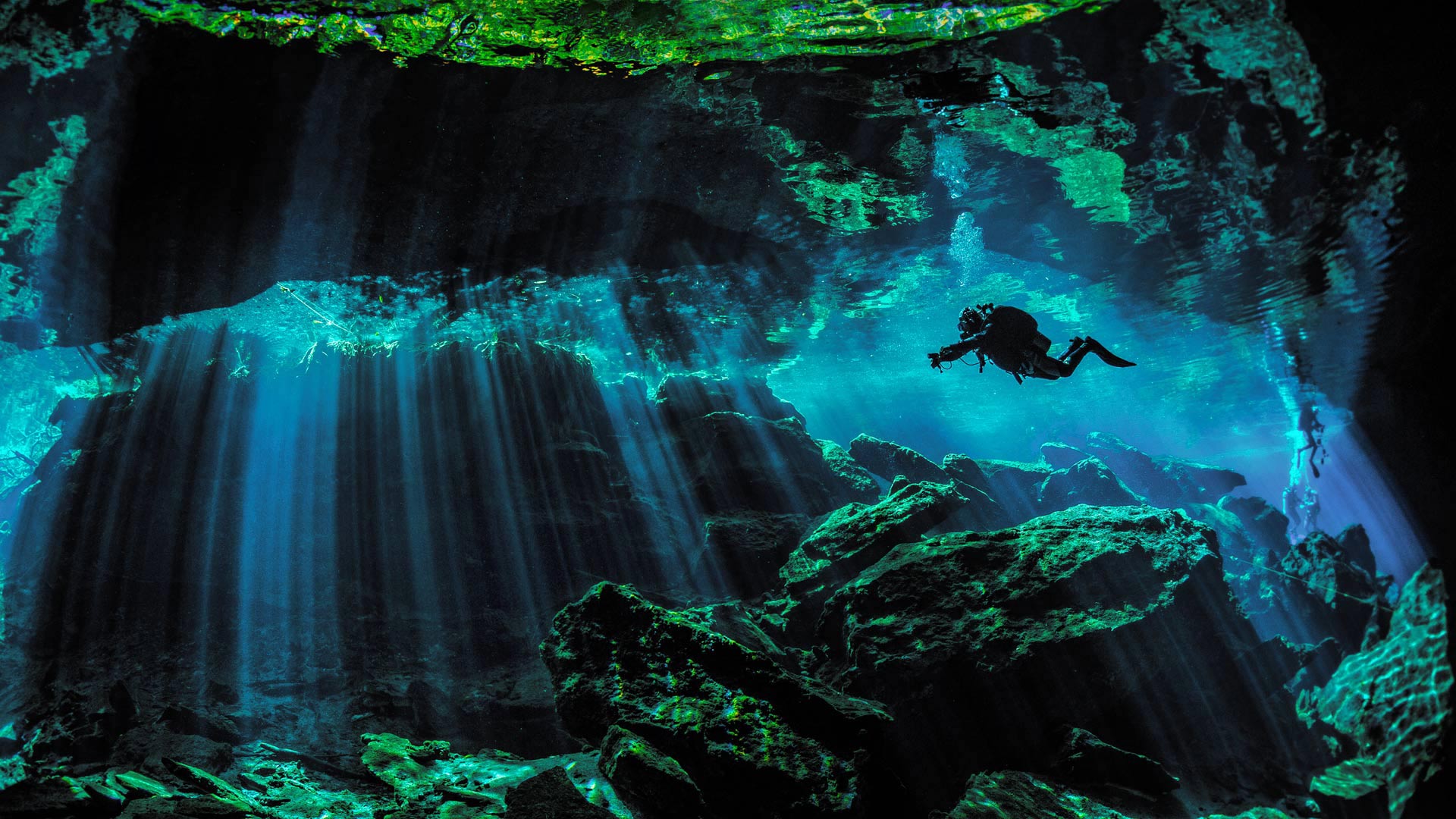潜水员探索文图拉斯港附近的水下天然井,墨西哥 Scuba diver exploring the underwater cenotes near Puerto Aventuras, Mexico (© Extreme Photographer/Getty Images)

潜水员探索文图拉斯港附近的水下天然井,墨西哥 Scuba diver exploring the underwater cenotes near Puerto Aventuras, Mexico (© Extreme Photographer/Getty Images)
地面之下的水中世界 Underwater underground
Cenote near Puerto Aventuras, Mexico
Like a giant block of Swiss cheese, Mexico's Yucatan Peninsula is riddled with holes called cenotes. Cenotes form when subterranean limestone dissolves, allowing underground water to penetrate. The rock above may cave in, forming a pit and revealing the cool, often crystal-clear water, while other cenotes may remain hidden and unexplored. Cenotes vary in size from very small to several dozen yards across, and recent discoveries have shown that cenotes lead to a series of underground cave systems that can span several miles in length.
In a region with little rainfall and no rivers or streams, the Yucatan's 6,000 cenotes were vital to the many cities of the Mayan civilization that used them as a primary source of fresh water. While some of the peninsula's cenotes have a mix of salt water and fresh water, many of the holes have remarkably clean fresh water that has slowly filtered through rock. The diffuse light that reaches into the underground chambers creates a magical effect. It makes for fantastic swimming and diving opportunities. Many of the larger cenotes feature platforms and ropes to jump off, and they are often located near historically significant Mayan ruins.
墨西哥Aventuras港附近的Cenote
墨西哥的尤卡坦半岛就像一块巨大的瑞士奶酪,布满了被称为洞穴的洞。当地下石灰岩溶解时,会形成洞穴,使地下水渗入。上面的岩石可能会塌陷,形成一个坑,露出凉爽的,通常是水晶般清澈的水,而其他的洞穴可能仍然隐藏着,未经勘探。洞穴的大小从很小到几十码不等,最近的发现表明,洞穴形成了一系列地下洞穴系统,其长度可以跨越几英里。
在一个降雨量少、没有河流或溪流的地区,尤卡坦人的6000个纪念碑对玛雅文明的许多城市至关重要,玛雅文明将其作为淡水的主要来源。虽然半岛上的一些洞穴混合了咸水和淡水,但许多洞穴都有非常干净的淡水,这些淡水已经慢慢渗透到岩石中。进入地下室的漫射光创造了一种神奇的效果。它提供了绝佳的游泳和跳水机会。许多较大的纪念碑都有跳台和绳索,它们通常位于历史上重要的玛雅遗址附近。
评论已关闭